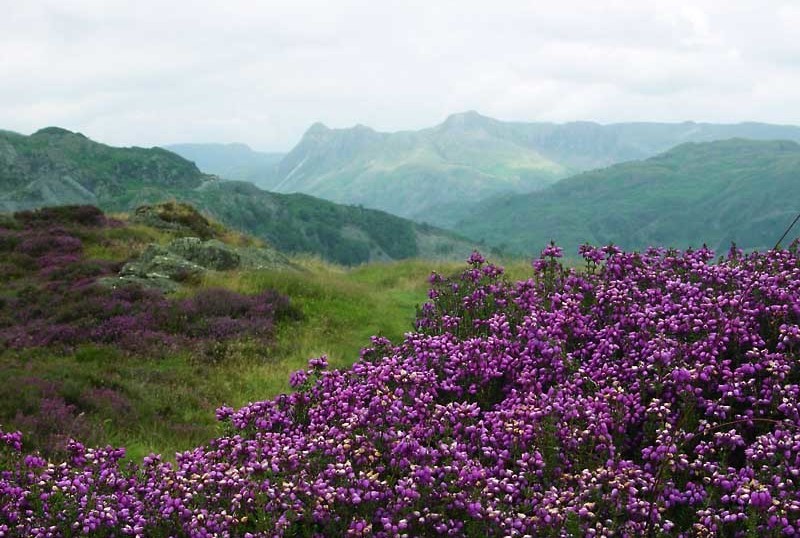
A vision for Lake District fell farming
A vision for Lake District fell farming
Some of the most inspiring conversations I have had were around our farmhouse kitchen table with my ex-farming neighbour Jonny Birkett.
Jonny is a legendary Lakeland Farmer who farmed at High Yewdale – one of Beatrix Potter’s most high-profile farms. Johnny described to me in detail what farming used to be like in the Lake District and I loved his regular visits which infused me with a passion for the culture and heritage of the Herdwick sheep and Lakeland fell farming.
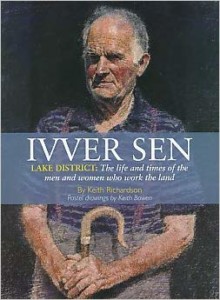
He described the hardship and graft of fell farming – something my ex-husband and I were starting to experience for ourselves having taken over the next-door Yew Tree Farm in 2002.
For me, his descriptions of the wildlife were equally inspiring. He told of the Yewdale fells and Wetherlam clad with deep heather and ‘blaeberry’; buzzing with life. He described what he called ‘capercaillie’ flying from the Yewdale Fells to Holme Fell. It seems we had black grouse in these parts as recently as the 1940’s; a species now largely absent from the Lakes along with the heather and bilberry.
Other, older fell farmers I talked to describe the hay meadows that were full of herbs and flowers and the ordeal of trying to make hay in such a wet climate. I learned there were corncrake in the Langdale valley close to where Stephen and I now live, and that the rivers were bursting with trout and salmon.
I heard stories of the shepherds of Troutbeck who slept in little huts on the hills to shepherd their hefted flocks – sheep that know which part of the open fell they ‘belong’ too. These tough shepherds would be on guard to send off ewes from other farms and move the flock around so that areas of the fell could ‘freshen up.’
I was fascinated to hear of the hairy hardy cattle and ponies that used to graze the fells alongside the notoriously tough and resilient Herdwick’s.
I love the tiny dry-stone walled fields and was interested to learn that most farmers wouldn’t let the grazing livestock ‘hear the church bell strike twice’ in the same field, moving on to allow the field to recover before being re-grazed.
And we mustn’t forget that all these fell farms were producing their food organically. There were no pesticides, inorganic fertilisers, wormers, antibiotics, grain feeds, mineral blocks, silage balers or any of the other modern quick fixes on which we we have become so reliant today.
The meat, dairy, and eggs that were produced from these small farms were high in a wide range of healing nutrients and devoid of the harmful substances that lace the produce displayed in shiny packets on the supermarket shelves.
Sadly, along with the wildlife and the nourishing foods, the traditional fell farming ways have been largely lost in the process of adapting to the demands of a modern world.
Our insatiable appetite for cheap food over the last few decades was fully supported by the Government who paid farmers to keep more livestock. In the UK the efficiencies of scale drove down prices and allowed the British public to reduce the portion of their income spent on food from approximately 35% to our all-time low of about 8%.
Aside from a national health crisis, the extra pressure on our local and global ecosystems this shift intensification of production created is vast.
Our soils are now bankrupt, the biological saving account is spent.
Symptoms of soil degradation such as; loss of productivity, destructive flooding events, increased drought and ‘plagues’ like liver fluke infestations are threatening the viability of all farmers especially those in the uplands of the UK.
Profitability is rock bottom, just like the soils that can no longer retain water or grow healthy plants able to compete with the ever more dominant bracken and rush taking over our fells.
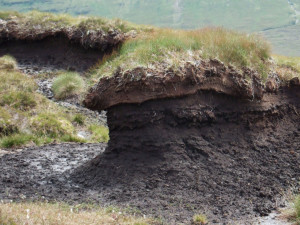
The situation is spiralling out of control. The public blame farmers for the dramatic loss of biodiversity and for a depleted soil stock that Environment Minister Michael Gove recently reported as having only ’30-40 years of fertility’ left with which to grow our food. In this ever-intensifying argument between conservation bodies, government ministers, farmers and the public, we must remember that farmers were responding to public demand.
The responsibility for our dangerously vulnerable situation sits squarely with us all.
I am a regenerative agricultural consultant and a professional educator in holistic management; a framework for working with the complexity of living systems.
What we teach and understand about land management which is less understood in conventional farming and conservation is that our land is a self-organising living being.
Unlike a machine, if you remove a broken part, you can’t simply replace it and expect the thing to run again. Our traditional fell farming in days of old was undertaken with the help of a healthy biological bank account left to us by mother nature.
We had deep carbon-rich soils alive with an intact ‘microbial bridge’ which allowed our plants to access nutrients through biological pathways instead of relying on the poor soluble pool of nutrients, these nutrients were passed up to the livestock and wildlife preventing disease.
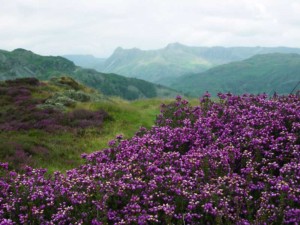
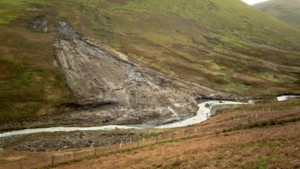
We had biodiversity of such complexity the land could still produce food for herbivores even in dry springs, wet summers and harsh winters, just as truly healthy pristine environments still do today.
We had livestock that were selected for hardiness, a strong mothering instinct (that would protect young from foxes and carrion) and health rather than how quickly they get fat or their compliant nature.
Our mixed species of livestock grazed along with wild herbivores and the overall mix of grazers ensures no particular species was allowed to over rest. Proper traditional shepherding prevented the ‘grazing out’ of any species.
Hay meadows and pastures contained diverse species with diverse root architecture that prevented waterlogging. Each different plant species producing Phytonutrients (plant medicines) that allowed livestock to self-medicate and achieve the full 42 or so nutrients required to resist disease.
Abundant birds and insect predators that prevented booms in a population of pest invertebrates such as ticks, blow flies or worms harming our livestock.
These ‘parts’ have gone and the ecological gaps that this created have been filled by other species such as bracken and competitive grasses. The complexity that protected us has been replaced by a handful of species that offer little resilience to climate fluctuations or pests and disease.
This sort of farming was a ‘prevention rather than cure’ scenario. As modern ‘fixes’ were gradually drip-fed to farmers over the decades, the negative consequences of these supposed solutions were not fully noticed. Each of these advances also added an additional expense to already low-profit enterprises.
Nowadays fertiliser and grain costs are soaring, we are close to reaching a day when wormers no longer work, we’re losing the gene pool from resilient breeds, and a high proportion of the annual expenses are spent on treating or attempting to suppress disease.
But where do we go from here? Recently the Lake District has become a World Heritage Site. We now have a global responsibility to maintain the authenticity as a landscape of incomparable beauty which continues to be shaped by the traditional culture of fell farming.
Our fell farming is not going to thrive or even possibly survive unless we can address these issues.
More technological fixes are not going to save us. The only answer is to build up our biological savings account and then ensure we live off the interest payments rather than dipping into the savings pot.
What we in regenerative agriculture understand well, is that cannot be achieved by simply reducing numbers or removing livestock.
Resting an environment in this ‘non-brittle’ part of the world does allow certain species to return and will increase the water holding capacity to some degree. But to regenerate an environment that will perform the ecosystem services we once benefited from, we must mimic the functions of all the important players in the food web; a wide range of herbivores are essential to a fully functional ecosystem.
The enemy to regenerating soils is ‘set stock’ grazing with one species. By grazing only sheep and allowing them to have a choice of their preferred species – without facilitating proper recovery – we weaken that plant and it will disappear from the sward. What will then thrive are the least palatable plants such as bracken, rush, purple moor grass and matt grass which will become ever more rank – especially in the absence of heavy animal impact and less selective grazing by cattle. The lower the numbers, the worse it gets.
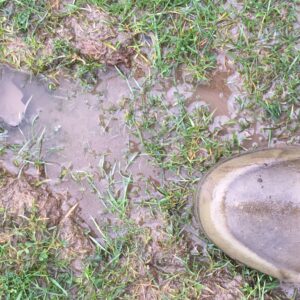
This type of management is what our newer more modern fell farmers are generally practising; exacerbated by ever reducing numbers of livestock through conservation schemes.
But the solution is certainly not to simply increase sheep numbers, that will lead to more selective grazing and a continued shift from grasses to bracken – this is no good for farmers or wildlife.
What needs to happen is a resurrection of the old fell farming system.
With insight from modern soil science and the inclusion of soil regeneration techniques developed for returning desert to grassland, we have the chance to create a new regenerative fell farming model. We have new solutions that can address some of the limiting elements of the traditional farming model, such as trying to make hay and how to prevent disease.
This model will embrace and return some of the truly authentic traditions of fell farming such as shepherding; mixed grazing with sheep, hardy cattle, and ponies; properly managing diverse meadows and wood pastures; and farming without medicines, fertilisers or chemicals. Reducing the input costs and increasing our soil health so it can sustain viable numbers of livestock is the only way farming will survive on a new potentially reduced subsidy system.
The most exciting part of this opportunity is that we get to see and experience some of the most iconic aspects of this great Lakeland tradition. Not because we are trying to create some sort of living museum, but for the sake of the future of farming and food production in our Country.
We are actively looking for partner agencies and interested fell farmers to help us with developing and refining this model. Please contact me at info@wilderculture.com if you think you can help.
Caroline


No Comments